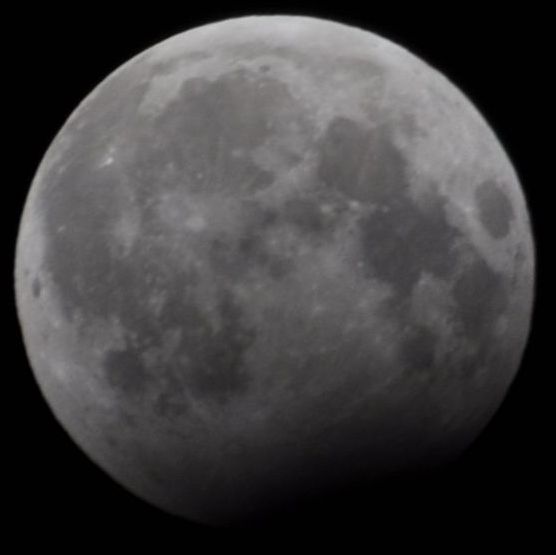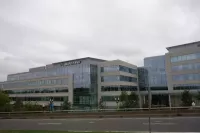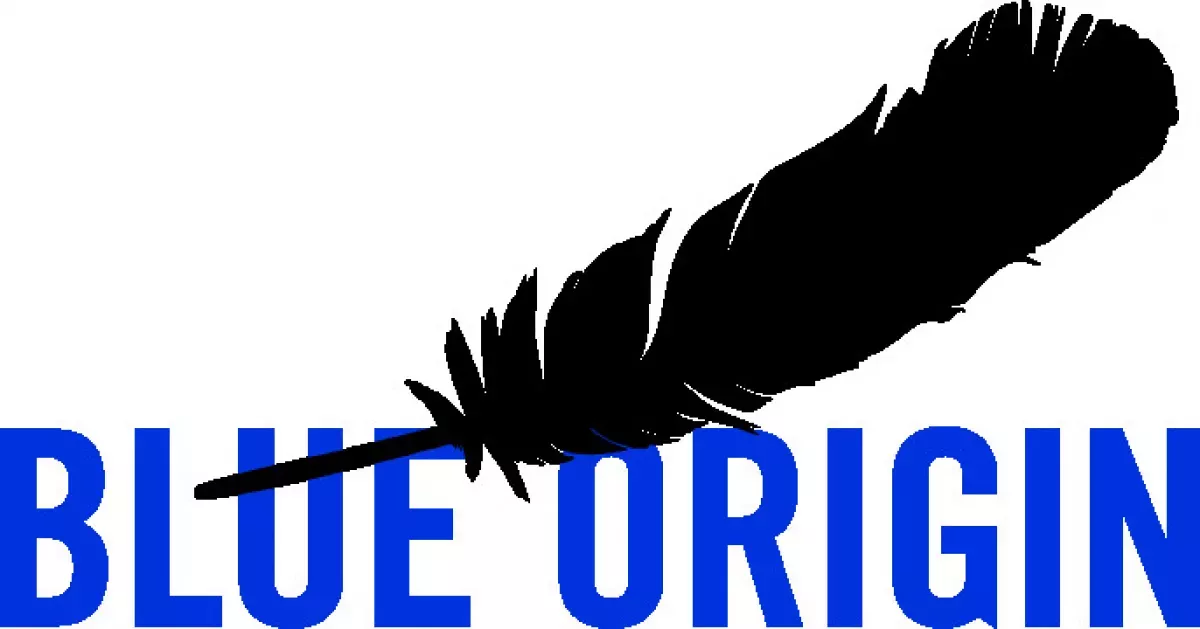Blue Origin is an American space technology company developing reusable launch vehicles like New Shepard and New Glenn. It also produces rocket engines, including those for ULA's Vulcan Centaur. Blue Origin is involved in lunar exploration through the Blue Moon lander for NASA's Artemis program and is developing the Blue Ring spacecraft platform. Furthermore, it is a partner in the Orbital Reef space station project. The company focuses on reducing the cost of space access and enabling a future where millions of people live and work in space.
March 5, 2005: First Flight Test of Charon
On March 5, 2005, the company's first flight test vehicle, Charon, made its only test flight at Moses Lake, Washington. It flew to an altitude of 96 m (316 ft) before returning for a controlled landing.
November 13, 2006: First Flight of Goddard (PM1)
On November 13, 2006, the company's next test vehicle, named Goddard (also known as PM1), first flew successfully.
2009: NASA Funding via Space Act Agreement
In 2009, NASA awarded the company $3.7 million in funding through a Space Act Agreement under the Commercial Crew Development (CCDev) program. The funding supported the development of concepts and technologies for future human spaceflight operations, focusing on an innovative 'pusher' escape system and a composite pressure vessel cabin.
November 8, 2010: Completion of CCDev Milestones
On November 8, 2010, it was announced that the company had completed all milestones under its CCDev Space Act Agreement with NASA.
April 2011: NASA Funding Under CCDev Phase 2
In April 2011, the company received $22 million in funding from NASA under the CCDev phase 2 program. Milestones included performing reviews on the orbital Space Vehicle, maturing the pusher escape system, and accelerating the development of its BE-3 engine.
May 6, 2011: First Flight Test of PM2
On May 6, 2011, PM2, another early suborbital test vehicle, had its first flight test, which was a short hop (low altitude, VTVL takeoff and landing mission) in west Texas.
August 24, 2011: Failed Flight Test of PM2
On August 24, 2011, the second flight test of PM2 failed when ground personnel lost contact and control of the vehicle, the vehicle was lost. As the vehicle reached a speed of Mach 1.2 and 14 km altitude, a "flight instability drove an angle of attack that triggered [the] range safety system to terminate thrust on the vehicle".
2012: NASA's CCiCap Solicitation
In 2012, NASA's Commercial Crew Program released its follow-on CCiCap solicitation for crew delivery to the ISS by 2017, but the company did not submit a proposal.
October 1, 2013: Original Target Date for Pad Transfer Delayed
NASA had originally planned to complete the bid award and have the pad transferred by October 1, 2013, but the company's protest delayed a decision until the U.S. General Accounting Office (GAO) reached a decision on the protest.
December 2013: GAO Denies Protest Over Launch Pad 39A Lease
In December 2013, the U.S. General Accounting Office (GAO) denied the company's protest and sided with NASA, which argued that the solicitation contained no preference on the use of the facility as either multi-use or single-use.
2013: Failed Bid for Launch Complex 39A
In 2013, the company submitted a bid to lease Launch Complex 39A at the Kennedy Space Center for shared use, but commercial use of the complex was awarded to SpaceX instead.
July 2014: Jeff Bezos' Investment in Blue Origin
By July 2014, Jeff Bezos had invested over $500 million into the company.
2016: Charon on Display at Museum of Flight
As of 2016, the company's first flight test vehicle, Charon, is on display at the Museum of Flight in Seattle, Washington.
2016: Funding from Jeff Bezos' Private Investment Fund
The vast majority of funding into the company through 2016 was to support technology development and operations, with the majority of funding coming from Jeff Bezos' private investment fund.
April 2017: Jeff Bezos' Annual Investment
In April 2017, it was published that Jeff Bezos was selling approximately $1 billion in Amazon stock per year to invest in the company.
2017: Target for ISS Crew Delivery
In 2012, NASA's Commercial Crew Program released its follow-on CCiCap solicitation for the development of crew delivery to ISS by 2017.
2019: Funding from the United States Air Force
In 2019, the company received $181 million from the United States Air Force for launch vehicle development and was eligible for further grants totaling $500M as part of the U.S. Space Force Launch Services Agreement competition.
April 30, 2020: $579 Million Contract Won for HLS Development
On April 30, 2020, the company, leading the "National Team," won a $579 million contract to develop and test an integrated Human Landing System (HLS) for the Artemis program to return humans to the Moon.
April 16, 2021: Lost Bid for NASA's Artemis Program
On April 16, 2021, NASA officially selected Space Exploration Technologies Corp. (SpaceX) to develop, test, and build their version of the Human Landing System (HLS) for Artemis missions 2 (II), 3 (III), and 4 (IV). The company lost its first bid to work for NASA's Artemis program.
2021: NASA Funding for Lunar Lander Projects and Sub-orbital Research Flights
In early 2021, the company received over $275 million from NASA for lunar lander projects and sub-orbital research flights.
November 18, 2022: Agreement with U.S. Space Systems Command
On November 18, 2022, the U.S. Space Systems Command announced an agreement with the company that allows the company's New Glenn rocket to compete for national security launch contracts once it completes flight certifications for Top Secret military payloads.
December 6, 2022: Second Bid Submitted for NASA's Sustaining Lunar Development Competition
On December 6, 2022, the company submitted a second bid via the NASA Sustaining Lunar Development (SLD) competition to fund and develop a second lunar lander for transporting astronauts to and from the lunar surface. The company is leading the "National Team," including Draper, Boeing, Lockheed Martin, Astrobotic, Honeybee Robotics and the company.
2023: Revenue and Orders in 2023
In 2023, Bob Smith stated the company had "hundreds of millions in revenue as well as billions of dollars in orders".
2023: NASA Award for Lunar Regolith Solar Systems
In 2023, NASA awarded the company $35 million for their work on lunar regolith, to be used for solar powered systems on the moon. The project, named "Blue Alchemist," aims to create solar cells from lunar regolith using molten regolith electrolysis, also producing oxygen as a byproduct.
January 2025: First Orbital Spaceflight with New Glenn
In January 2025, the company achieved orbital spaceflight with the maiden launch of New Glenn.
August 12, 2025: Proposed Mars Telecommunications Orbiter Mission
On August 12, 2025, the company announced a proposed Mars Telecommunications Orbiter (MTO) mission to fulfill NASA's requirements for an orbiter dually-used for a Mars Sample Return mission and future crewed Mars missions. It would be based on Blue Origin's Blue Ring Satellite Platform.
2028: Target Operational Date for Mars Telecommunications Orbiter
The company envisions the Mars Telecommunications Orbiter to be operational by 2028.
2029: Planned Crewed Moon Landing
In 2029, the company has a planned crewed Moon landing as part of the Artemis V mission, following an uncrewed test mission. This is part of a contract with NASA to develop, test, and deploy its Blue Moon landing system.
Mentioned in this timeline

Jeff Bezos is an American businessman renowned as the founder...

SpaceX founded in is a private American aerospace manufacturer and...

A blue moon is defined in several ways most commonly...
NASA the National Aeronautics and Space Administration is an independent...

The Boeing Company is a multinational corporation and one of...

Seattle is the most populous city in Washington state and...
Trending
8 days ago Jalen Williams' Impact: Thunder, Warriors Matchups, Dort's Future, Injury Return
Keldon Johnson is an American professional basketball player currently playing for the San Antonio Spurs in the NBA Prior to...

6 months ago Brokeback Mountain's 20th Anniversary: Challenging Hollywood and impacting audiences, starring Heath Ledger.

6 months ago Sarah Sherman's SNL Checks Mistakenly Sent to Gilda Radner's Estate: A Sobbing Revelation

Lily Allen is an English singer songwriter and actress known for her distinctive voice and candid lyrics She gained prominence...

8 days ago Jesse Plemons discusses 'Bugonia', Oscar buzz, and career from child actor.
Popular

Candace Owens is an American conservative political commentator and author...

Ilhan Omar is an American politician currently serving as the...

XXXTentacion born Jahseh Dwayne Ricardo Onfroy was a controversial yet...

Tom Cotton is an American politician and Army veteran currently...
The Kennedy Center Honors are annual awards recognizing individuals and...

Kelsey Grammer is an accomplished American actor producer and singer...
